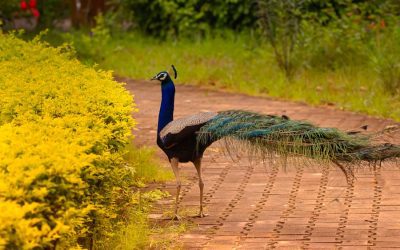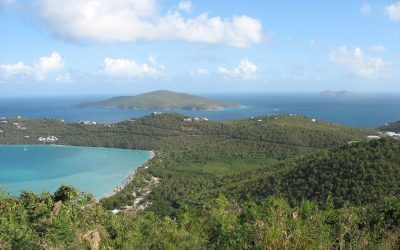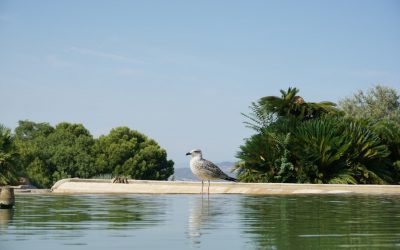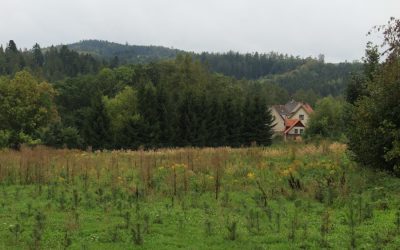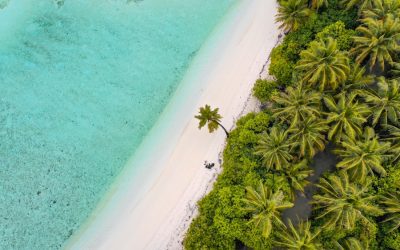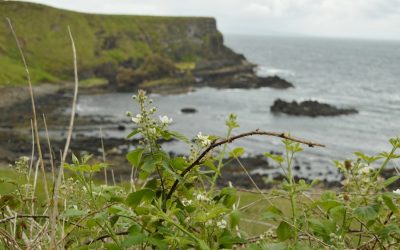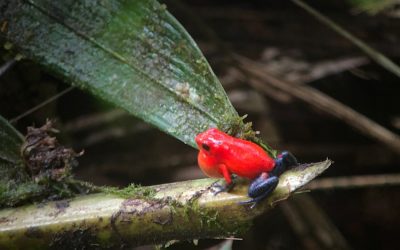World Geography
Geography is the study of the Earth’s landscapes, environments, and the relationships between people and their surroundings. It encompasses both the physical aspects of the Earth, such as its landforms, bodies of water, and climate, as well as the human aspects, including population distribution, cultures, and economies. World geography is a broad field that seeks to understand the complexities of our planet and how humans interact with it. By studying world geography, we can gain a deeper appreciation for the diversity of our planet and the interconnectedness of its various regions.
Geography is a multidisciplinary field that draws on elements of physical science, social science, and humanities. It involves the use of maps, spatial analysis, and geographic information systems (GIS) to understand the Earth’s surface and the processes that shape it. World geography also encompasses the study of human geography, which examines the ways in which people and their activities are distributed across the Earth. By understanding world geography, we can better appreciate the environmental, cultural, and economic challenges facing different regions of the world. This knowledge is crucial for addressing global issues such as climate change, resource management, and international development.
The Five Oceans and Seven Continents
The Earth’s surface is divided into five major oceans: the Pacific, Atlantic, Indian, Southern (or Antarctic), and Arctic Oceans. These vast bodies of water play a crucial role in regulating the Earth’s climate and supporting diverse marine ecosystems. The oceans also serve as important transportation routes and a source of food and other natural resources for human societies around the world.
In addition to the oceans, the Earth’s landmasses are divided into seven continents: Africa, Antarctica, Asia, Europe, North America, Australia (or Oceania), and South America. Each continent has its own unique physical and cultural characteristics, shaped by millions of years of geological processes and human history. From the deserts of Africa to the rainforests of South America, the continents offer a rich tapestry of landscapes and environments for exploration and study.
Major Mountain Ranges and Deserts
The Earth’s surface is also marked by major mountain ranges and deserts that have shaped the planet’s physical and cultural landscapes. The Himalayas, for example, are the highest mountain range in the world and are home to diverse ecosystems and cultures in countries such as India, Nepal, and Bhutan. The Andes in South America, the Rockies in North America, and the Alps in Europe are other prominent mountain ranges that have influenced human settlement patterns and economic activities.
Deserts cover about one-third of the Earth’s land surface and are characterized by low precipitation and extreme temperatures. The Sahara Desert in Africa is the largest hot desert in the world, while the Gobi Desert in Asia is one of the largest cold deserts. Deserts are not only home to unique flora and fauna but have also been important trade routes and cultural crossroads throughout history.
Climate Zones and Biomes
The Earth’s climate is influenced by a variety of factors, including latitude, altitude, ocean currents, and prevailing winds. As a result, the planet is divided into different climate zones, each with its own characteristic weather patterns and ecosystems. The equator, for example, experiences a tropical climate with high temperatures and heavy rainfall, while the polar regions have a cold and dry climate.
These climate zones give rise to different biomes, or large ecological areas characterized by distinct plant and animal communities. The tropical rainforest biome, found near the equator, is home to a diverse array of species and is vital for regulating the Earth’s climate. The grasslands biome, found in regions such as the African savannah and North American prairies, supports grazing animals and has been important for human agriculture throughout history.
Human Geography and Population Distribution
Human geography examines the ways in which people and their activities are distributed across the Earth’s surface. It encompasses topics such as population growth, migration patterns, urbanization, and cultural diversity. Understanding human geography is crucial for addressing global challenges such as poverty, inequality, and environmental degradation.
Population distribution is uneven across the world, with some regions experiencing rapid population growth while others are declining. The majority of the world’s population lives in Asia, particularly in countries such as China and India. Urban areas are also growing rapidly, with more than half of the world’s population now living in cities. This trend has significant implications for infrastructure development, resource management, and social inequality.
Historical and Cultural Geography
Historical geography examines how human activities have shaped the Earth’s landscapes over time. It explores topics such as colonialism, trade routes, and the rise and fall of empires. Cultural geography focuses on how human cultures have developed in different regions of the world and how they interact with their environments.
The Silk Road, for example, was an ancient trade route that connected China with Europe and facilitated the exchange of goods, ideas, and technologies across Eurasia. This historical trade route had a profound impact on the development of cultures and economies along its path. Similarly, cultural geographers study how different societies have adapted to their environments through practices such as agriculture, architecture, and religious beliefs.
The Importance of Geographic Knowledge
Geographic knowledge is crucial for addressing global challenges such as climate change, resource management, and international development. By understanding world geography, we can better appreciate the environmental, cultural, and economic challenges facing different regions of the world. This knowledge is crucial for addressing global issues such as climate change, resource management, and international development.
Geographic knowledge also helps us to understand our interconnectedness with other regions of the world. By studying world geography, we can gain a deeper appreciation for the diversity of our planet and the interconnectedness of its various regions. This understanding can foster a sense of global citizenship and empathy for people from different cultures and backgrounds.
In conclusion, world geography is a complex and multifaceted field that encompasses both physical and human aspects of the Earth’s landscapes. By studying world geography, we can gain a deeper appreciation for the diversity of our planet and the interconnectedness of its various regions. This knowledge is crucial for addressing global challenges such as climate change, resource management, and international development. It also helps us to understand our interconnectedness with other regions of the world and fosters a sense of global citizenship.
FAQs
What is world geography?
World geography is the study of the Earth’s landscapes, environments, and the relationships between people and their environments. It encompasses the physical features of the Earth, as well as the human activity that takes place on it.
Why is world geography important?
World geography is important because it helps us understand the world around us. It provides insights into the physical and human processes that shape our planet, and helps us make informed decisions about how to interact with our environment.
What are the main branches of world geography?
The main branches of world geography include physical geography, which focuses on the Earth’s natural features and processes, and human geography, which examines the relationships between people and their environments.
How does world geography impact our daily lives?
World geography impacts our daily lives in numerous ways, from influencing the weather and climate we experience, to shaping the availability of natural resources and influencing the distribution of populations and cultures around the world.
What are some key concepts in world geography?
Key concepts in world geography include location, place, human-environment interaction, movement, and region. These concepts help geographers understand and interpret the world around them.
Exploring the Flora and Fauna of Cyprus
Cyprus, the third largest island in the Mediterranean, is renowned not only for its rich history and cultural heritage but also for its remarkable biodiversity. The island’s unique geographical position at the crossroads of Europe, Asia, and Africa has resulted in a diverse array of ecosystems that support a wide variety of plant and animal life. The combination of its varied topography, ranging from mountainous regions to coastal plains, along with its Mediterranean climate, creates an environment where numerous species can thrive. This biodiversity is not merely a backdrop to the island’s human activities; it plays a crucial role in maintaining ecological balance and supporting local economies through agriculture, tourism, and recreation. The significance of Cyprus’s biodiversity extends beyond its natural beauty. It is a living testament to the evolutionary processes that have shaped life on Earth. The island is home to a plethora of habitats, including forests, wetlands, and coastal areas, each hosting distinct communities of organisms. The interplay between these habitats fosters a complex web of life that is both fascinating and essential for the health of the planet. Understanding and appreciating this biodiversity is vital for the sustainable management of natural resources and the preservation of Cyprus’s unique ecological heritage. Summary Cyprus is home to a rich and diverse range of flora and fauna, making it a hotspot for biodiversity in the Mediterranean region. The unique flora of Cyprus includes over 1,800 plant species, with a significant number of them being endemic to the island. The diverse fauna of Cyprus includes a variety of reptiles, amphibians, birds, and mammals, many of which are also endemic to...
Exploring Austria’s Flora and Fauna
Austria, a landlocked country in Central Europe, is renowned for its stunning landscapes, which range from the majestic peaks of the Alps to the serene banks of the Danube River. This geographical diversity contributes significantly to the rich tapestry of biodiversity found within its borders. The country is home to a wide array of ecosystems, each supporting unique flora and fauna. Austria’s biodiversity is not merely a backdrop to its picturesque scenery; it plays a crucial role in maintaining ecological balance and providing essential services to both the environment and human populations. The varied climatic conditions across Austria, influenced by its topography and geographical location, create a mosaic of habitats. From the alpine regions characterised by rugged mountains and glacial lakes to the lowland forests and wetlands, each area harbours distinct species adapted to their specific environments. This diversity is further enriched by Austria’s commitment to conservation and sustainable practices, which aim to protect its natural heritage for future generations. Understanding the intricate relationships between species and their habitats is vital for appreciating the ecological significance of Austria’s biodiversity. Summary Austria is home to a diverse range of flora and fauna, thanks to its unique habitats and varied landscapes. The alpine flora of Austria is particularly fascinating, with a wide variety of mountain plants adapted to the harsh conditions of the high altitudes. From the majestic Alps to the tranquil Danube River, Austria’s wildlife is rich and varied, offering a unique experience for nature enthusiasts. Conservation efforts in Austria are focused on protecting endangered species and their habitats, with national parks and reserves playing a crucial role in these...
Exploring the Rich Flora and Fauna of Australia
Australia is renowned for its extraordinary biodiversity, a treasure trove of life that has evolved in isolation for millions of years. This vast continent, with its diverse ecosystems ranging from arid deserts to lush rainforests, is home to an astonishing array of species, many of which are found nowhere else on Earth. The unique evolutionary history of Australia has resulted in a rich tapestry of flora and fauna, characterised by both endemic species and remarkable adaptations to the environment. The continent’s geographical isolation has fostered a distinct biological heritage, making it a focal point for conservationists and ecologists alike. The significance of Australia’s biodiversity extends beyond mere numbers; it plays a crucial role in the health of the planet. Ecosystems such as the Great Barrier Reef, the world’s largest coral reef system, and the ancient rainforests of Tasmania are vital not only for their intrinsic beauty but also for their contributions to global ecological balance. These ecosystems provide essential services, including carbon sequestration, water filtration, and habitat for countless species. However, the intricate web of life that characterises Australia is under threat from various human activities and environmental changes, necessitating urgent attention and action. Summary Australia is home to a unique and diverse range of flora and fauna, making it one of the most biodiverse countries in the world. The flora of Australia includes iconic species such as eucalyptus trees, kangaroo paws, and the famous kangaroo grass. Australia’s fauna is equally diverse, with iconic species such as kangaroos, koalas, platypuses, and a wide variety of bird species. Threats to Australia’s biodiversity include habitat loss, invasive species, climate change, and...
Exploring the Wildlife of Malawi
Malawi, often referred to as the “Warm Heart of Africa,” is a country that boasts a rich tapestry of wildlife and natural beauty. Nestled in the southeastern part of the continent, it is home to diverse ecosystems ranging from lush forests and savannahs to the expansive shores of Lake Malawi. This unique geographical setting provides a habitat for a wide array of flora and fauna, making it a hidden gem for wildlife enthusiasts and nature lovers alike. The country’s commitment to preserving its natural heritage is evident in its numerous national parks and reserves, which serve as sanctuaries for both endemic and migratory species. The wildlife of Malawi is not only significant for its ecological value but also for its cultural importance. Many local communities have coexisted with these animals for generations, developing a deep respect and understanding of their behaviours and habitats. This relationship has fostered a sense of stewardship among the people, who recognise the importance of conserving their natural resources. As such, Malawi’s wildlife is not merely a backdrop for tourism; it is an integral part of the nation’s identity and heritage. Summary Malawi is home to a diverse range of wildlife, including elephants, hippos, and leopards. The country boasts several national parks and reserves, such as Liwonde National Park and Nyika National Park. Unique species found in Malawi include the African fish eagle, the Thornicroft’s giraffe, and the Puku antelope. Birdwatching is a popular activity in Malawi, with over 650 bird species to spot, including the Lilian’s lovebird and the African skimmer. Conservation efforts in Malawi focus on protecting endangered species and habitats, with initiatives...
Exploring the Rich Flora and Fauna of India
India is a land of remarkable biodiversity, boasting a rich tapestry of flora and fauna that is both unique and diverse. Spanning across various climatic zones, from the snow-capped Himalayas in the north to the tropical rainforests in the south, India is home to an astonishing array of ecosystems. This vast country, which covers approximately 3.287 million square kilometres, harbours around 7-8% of the world’s recorded species, making it one of the 17 megadiverse countries globally. The intricate interplay of geography, climate, and human activity has shaped India’s biodiversity, resulting in a complex web of life that is both beautiful and fragile. The significance of India’s biodiversity extends beyond mere numbers; it plays a crucial role in sustaining the livelihoods of millions of people. The diverse ecosystems provide essential services such as clean air and water, pollination of crops, and regulation of climate. Furthermore, India’s rich biological heritage is intertwined with its cultural identity, as many communities have coexisted with nature for centuries, relying on its resources for food, medicine, and spiritual practices. However, this intricate balance is increasingly threatened by various factors, necessitating a deeper understanding of the country’s biodiversity and the urgent need for conservation efforts. Summary India is home to a rich and diverse range of flora and fauna, making it one of the world’s biodiversity hotspots. From the Himalayas to the Western Ghats, India’s diverse ecosystems include forests, grasslands, wetlands, and coastal areas, each supporting a unique array of wildlife. Iconic wildlife species in India include the Bengal tiger, Indian elephant, Indian rhinoceros, and the Asiatic lion, all of which are important symbols of the...
Exploring the Flora and Fauna of Cayman Islands
The Cayman Islands, a British Overseas Territory located in the western Caribbean Sea, is renowned for its stunning natural beauty, vibrant marine life, and rich cultural heritage. Comprising three islands—Grand Cayman, Cayman Brac, and Little Cayman—this tropical paradise is a haven for nature enthusiasts and adventure seekers alike. The islands are situated approximately 150 miles south of Cuba and 180 miles west of Jamaica, making them an accessible destination for tourists from North America and beyond. The allure of the Cayman Islands lies not only in its pristine beaches and crystal-clear waters but also in its unique ecosystems that support a diverse array of flora and fauna. The islands boast a warm tropical climate, characterised by gentle breezes and abundant sunshine, which creates an ideal environment for a variety of plant and animal species. The geography of the Cayman Islands is predominantly flat, with limestone formations and coral reefs that contribute to the rich biodiversity found in the region. The surrounding waters are teeming with marine life, while the islands themselves are home to lush vegetation, including mangroves, tropical hardwood forests, and coastal shrublands. This unique combination of terrestrial and marine ecosystems makes the Cayman Islands a focal point for ecological study and conservation efforts. Summary The Cayman Islands are a British Overseas Territory located in the Caribbean, known for their stunning natural beauty and diverse wildlife. The unique flora of the Cayman Islands includes rare orchids, colourful bromeliads, and the iconic silver thatch palm, which is the national tree of the islands. The diverse fauna of the Cayman Islands includes the critically endangered blue iguana, the Cayman parrot,...
Exploring the Rich Flora and Fauna of Antigua and Barbuda
Antigua and Barbuda, a twin-island nation nestled in the heart of the Caribbean, boasts a rich tapestry of biodiversity that is both unique and vital to the ecological balance of the region. The islands are characterised by their diverse ecosystems, which range from lush rainforests and mangroves to coral reefs and coastal wetlands. This variety of habitats supports an array of flora and fauna, some of which are endemic to the islands, making them a significant area for biological research and conservation efforts. The geographical positioning of Antigua and Barbuda, along with its climatic conditions, has fostered an environment where numerous species thrive, contributing to the islands’ ecological richness. The biodiversity of Antigua and Barbuda is not merely a backdrop for its stunning landscapes; it plays a crucial role in the livelihoods of local communities. The natural resources provided by these ecosystems support agriculture, fishing, and tourism, which are essential to the economy. However, this delicate balance is increasingly threatened by human activities, climate change, and invasive species. Understanding and appreciating the biodiversity of Antigua and Barbuda is paramount for fostering sustainable practices that protect these invaluable resources for future generations. Summary Antigua and Barbuda boast a rich biodiversity, with unique plant and animal species that are worth preserving. The islands are home to several endemic plant species, including the Antiguan Dagger, which is found only in Antigua and Barbuda. Antigua and Barbuda’s diverse animal life includes the Antiguan Racer, a critically endangered snake species found only on Great Bird Island. Conservation efforts in Antigua and Barbuda focus on protecting the natural habitats of endemic species and promoting sustainable...
Exploring the Wildlife of French Southern Territories
The French Southern Territories, a remote and largely uninhabited region of France, encompass a collection of islands and archipelagos located in the southern Indian Ocean. This territory includes the Crozet Islands, Kerguelen Islands, Amsterdam Island, and Saint Paul Island, among others. These islands are situated far from the mainland, with the nearest continental landmass being over 2,000 kilometres away. The French Southern Territories are not only significant for their geographical isolation but also for their unique ecological characteristics and rich biodiversity. Governed as a part of the French overseas territories, they are primarily administered from Réunion Island, which is located to the northwest. The French Southern Territories are often overlooked in discussions about biodiversity hotspots, yet they play a crucial role in the global ecosystem. The region is characterised by its harsh climatic conditions, which include strong winds, low temperatures, and frequent storms. Despite these challenges, the islands boast a variety of ecosystems that have evolved in isolation over millions of years. The remoteness of these territories has allowed for the development of unique flora and fauna, making them a subject of interest for scientists and conservationists alike. The French government has designated these areas as nature reserves, reflecting their commitment to preserving the ecological integrity of this remarkable region. Summary French Southern Territories are remote and pristine islands in the southern Indian Ocean, known for their unique ecosystems and diverse wildlife species. The islands are home to a variety of unique ecosystems and habitats, including tundra, peat bogs, and coastal areas, making them a haven for biodiversity. The diverse wildlife species found in the French Southern Territories include...
Exploring the Rich Flora and Fauna of Slovakia
Slovakia, a landlocked country in Central Europe, boasts a remarkable array of ecosystems that reflect its varied topography and climatic conditions. The country is characterised by the Carpathian Mountains, which stretch across its northern border, and the lowland plains that dominate the south. This geographical diversity creates a mosaic of habitats, ranging from alpine meadows and dense forests to wetlands and river valleys. Each of these ecosystems supports a unique assemblage of plant and animal life, making Slovakia a treasure trove for biodiversity. The mountainous regions, particularly the High Tatras, are home to subalpine and alpine ecosystems. These areas are characterised by rugged terrain, glacial lakes, and a climate that can be harsh, with cold winters and short growing seasons. In contrast, the lowland areas, such as the Danube River basin, feature fertile soils and a milder climate, supporting rich agricultural landscapes and diverse wetland habitats. The interplay between these ecosystems not only contributes to the overall biodiversity of Slovakia but also plays a crucial role in maintaining ecological balance and providing essential services such as water purification and carbon sequestration. Summary Slovakia boasts a diverse range of ecosystems, including mountains, forests, wetlands, and caves, providing habitats for a wide variety of flora and fauna. The unique flora of Slovakia includes over 2,600 species of vascular plants, with the Tatra Mountains being a hotspot for alpine and subalpine species. Slovakia is home to a fascinating array of fauna, including brown bears, lynx, wolves, and the critically endangered European ground squirrel. The country’s national parks and protected areas, such as the Tatra National Park and Slovak Paradise National Park, play...
Discovering the Rich Biodiversity of the Maldives
The Maldives, an archipelago of 26 atolls in the Indian Ocean, is renowned for its stunning natural beauty, characterised by white sandy beaches, crystal-clear turquoise waters, and vibrant coral reefs. This tropical paradise, located southwest of Sri Lanka and India, comprises over 1,000 coral islands, many of which are uninhabited. The nation’s unique geographical formation and its isolation have fostered a rich tapestry of biodiversity, making it a focal point for marine and terrestrial life. The Maldives is not only a popular tourist destination but also a critical ecological zone that supports a myriad of species, some of which are endemic to the region. The cultural heritage of the Maldives is as rich as its natural environment. The Maldivian people, predominantly Sunni Muslims, have a history that intertwines with trade routes across the Indian Ocean, leading to a blend of influences from Africa, the Middle East, and South Asia. This cultural diversity is reflected in the local cuisine, traditional music, and vibrant festivals. However, the allure of the Maldives extends beyond its cultural richness; it is the ecological significance of this island nation that draws attention from conservationists and ecologists alike. The delicate balance between human activity and environmental preservation is a pressing concern as tourism continues to thrive in this idyllic setting. Summary The Maldives is an archipelago nation in the Indian Ocean known for its stunning coral reefs and crystal-clear waters, making it a popular tourist destination. The marine biodiversity of the Maldives is incredibly diverse, with over 2000 species of fish, 187 species of coral, and a wide variety of marine life including sharks, rays, and...
Exploring the Rich Flora and Fauna of Isle of Man
The Isle of Man, a small yet ecologically rich island situated in the Irish Sea, boasts a remarkable array of biodiversity that is both unique and significant. Covering approximately 572 square kilometres, the island is home to a variety of habitats, ranging from rugged coastlines and sandy beaches to lush woodlands and heathlands. This diverse landscape supports an impressive range of flora and fauna, some of which are endemic to the island. The Isle of Man’s biodiversity is not merely a collection of species; it represents a complex web of interactions between organisms and their environments, shaped by both natural processes and human influences over centuries. The island’s geographical position, coupled with its varied topography and microclimates, has fostered the development of distinct ecosystems. The influence of the North Atlantic Ocean moderates the climate, creating conditions that support a rich tapestry of life. The Isle of Man is also notable for its commitment to conservation and sustainable practices, which have helped preserve its natural heritage. As we delve deeper into the unique flora and fauna of the Isle of Man, we will uncover the intricate relationships that define its ecosystems and the ongoing efforts to protect this biodiversity for future generations. Summary The Isle of Man is home to a rich and diverse range of flora and fauna, making it a hotspot for biodiversity in the British Isles. The unique flora of the Isle of Man includes rare orchids, wildflowers, and ancient oak woodlands, providing a stunning natural landscape. The diverse fauna of the Isle of Man includes a variety of bird species, seals, basking sharks, and dolphins, offering...
Exploring the Flora and Fauna of Christmas Island
Christmas Island, an Australian territory located in the Indian Ocean, is a remote paradise that boasts a unique blend of natural beauty and ecological significance. Spanning approximately 135 square kilometres, this island is situated about 2,600 kilometres northwest of Perth and 500 kilometres south of Java, Indonesia. Its isolation has fostered a rich tapestry of biodiversity, making it a focal point for scientists and nature enthusiasts alike. The island was discovered on Christmas Day in 1643 by Captain William Mynors, and it has since become known for its stunning landscapes, including rugged cliffs, dense rainforests, and pristine beaches. The island’s geographical isolation has resulted in a distinctive ecosystem that is home to numerous species found nowhere else on Earth. The combination of its tropical climate and varied topography creates a unique habitat that supports a wide range of flora and fauna. Christmas Island is particularly famous for its annual red crab migration, where millions of crabs traverse the island to breed, creating a spectacular natural phenomenon. This event not only highlights the island’s ecological importance but also draws visitors from around the globe who wish to witness this extraordinary migration. Summary Christmas Island is a remote Australian territory known for its unique flora and fauna, making it a haven for nature enthusiasts. The island is home to over 600 species of native plants, including rare orchids and unique rainforest species. Christmas Island boasts a diverse range of fauna, including the iconic red crab migration, seabird colonies, and numerous species of land crabs. The island is a hotspot for endemic species, with many plants and animals found nowhere else in...




